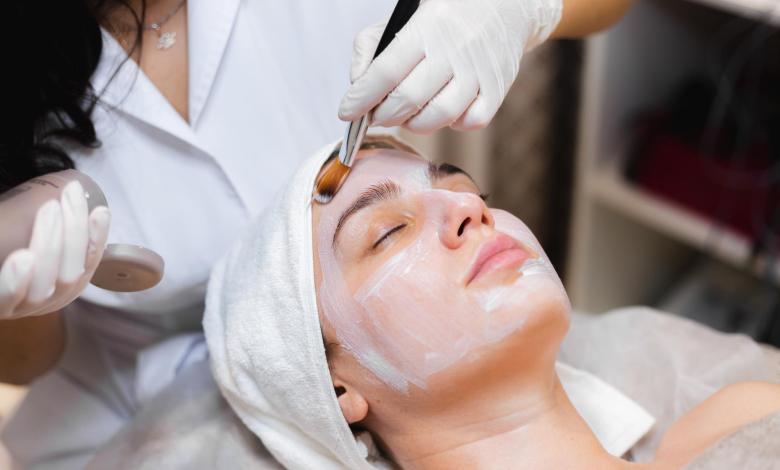How Chemical Peels Help Restore a Healthy, Even Complexion

Chemical peels have long been a cornerstone in dermatological and aesthetic treatments, revered for their ability to renew the skin’s surface and restore its natural luminosity. By using controlled exfoliation, chemical peels effectively remove damaged outer layers of skin, promoting regeneration and improved texture. The result is a smoother, brighter, and more even-toned complexion that radiates health. Understanding the benefits of a chemical peel provides valuable insight into why this treatment remains one of the most sought-after procedures in modern skin care.
The Science Behind Chemical Peels
At their core, chemical peels utilize a range of acid-based solutions to target specific layers of the skin. These solutions—such as glycolic acid, lactic acid, trichloroacetic acid (TCA), and salicylic acid—vary in strength and depth of penetration, allowing dermatologists to tailor treatments to individual needs.
When applied to the skin, the solution gently dissolves the bonds that hold dead or damaged cells together. This controlled exfoliation triggers the skin’s natural healing process, stimulating the production of collagen and elastin. Over time, this renewal process helps repair photo-damage, refine pores, and reduce irregular pigmentation.
From superficial peels designed for mild brightening to medium and deep peels that address more advanced concerns, each treatment offers a customized approach to rejuvenation.
The Transformative Benefits of a Chemical Peel
The benefits of a chemical peel extend far beyond surface-level enhancement. This treatment addresses multiple skin conditions simultaneously, delivering both corrective and preventive outcomes.
1. Improved Skin Tone and Texture
Chemical peels effectively eliminate dull, uneven skin, revealing a smoother and more uniform surface beneath. The exfoliation process enhances cellular turnover, promoting clarity and brightness.
2. Reduction of Hyperpigmentation and Sun Damage
Uneven pigmentation, melasma, and sunspots are among the most common concerns treated with peels. The active ingredients help fade discoloration and encourage balanced melanin production, restoring harmony to the skin’s tone.
3. Acne Control and Scar Reduction
By unclogging pores and regulating sebum production, certain acids like salicylic acid are highly effective in managing acne-prone skin. Over time, chemical peels also soften the appearance of shallow acne scars and post-inflammatory pigmentation.
4. Diminished Fine Lines and Wrinkles
Regular treatments promote collagen synthesis, improving the skin’s elasticity and reducing the visibility of fine lines. The result is a firmer, more youthful complexion.
5. Enhanced Absorption of Skincare Products
With dead skin cells removed, active ingredients from skincare products penetrate more effectively, optimizing the results of a daily skincare routine.

Types of Chemical Peels
Superficial Peels
These mild peels use alpha-hydroxy acids (AHAs) or beta-hydroxy acids (BHAs) to exfoliate the outermost layer of the skin. Ideal for improving texture, tone, and hydration, they are often referred to as “lunchtime peels” due to their minimal downtime.
Medium Peels
Containing stronger acids like trichloroacetic acid (TCA), medium-depth peels reach deeper into the dermal layer. They target moderate wrinkles, pigmentation issues, and early signs of ageing, resulting in more pronounced rejuvenation.
Deep Peels
Phenol-based peels penetrate the deepest layers, delivering dramatic improvements for significant photo-damage, scarring, or deep wrinkles. These require more recovery time but offer long-lasting results.
The Procedure and Recovery Process
The chemical peel procedure begins with a thorough cleansing of the skin to remove impurities and oils. The chosen chemical solution is then applied evenly, left to act for a specified duration, and neutralized to halt the reaction. Patients may experience mild tingling or warmth during application—a normal indication of the exfoliation process at work.
Following treatment, the skin undergoes a visible renewal phase. Light flaking or peeling may occur over several days as new skin cells emerge. Post-treatment care is crucial: hydration, sun protection, and avoidance of harsh products ensure optimal recovery and long-term results.
Safety and Suitability
Chemical peels are suitable for a wide range of skin types and concerns, though consultation with a qualified practitioner is essential to determine the appropriate peel type and strength. Factors such as skin sensitivity, pigmentation, and prior treatments will influence the selection process.
When performed by an experienced clinician, chemical peels are safe and effective. Proper preparation, precise application, and professional aftercare significantly minimize the risk of complications such as irritation or uneven peeling.
The Modern Appeal of Chemical Peels
In today’s fast-paced world, patients increasingly seek non-invasive yet effective treatments that deliver visible results. The benefits of a chemical peel align perfectly with this demand—offering rejuvenation without the downtime associated with more intensive procedures.
This treatment’s versatility makes it suitable for individuals of various ages and skin concerns, from those managing early signs of ageing to others addressing persistent pigmentation or texture irregularities.
By enhancing cellular renewal and improving dermal integrity, chemical peels embody the balance between science and aesthetics—helping the skin regain its vitality, uniformity, and youthful glow.
Ultimately, chemical peels are not merely cosmetic; they are restorative. Through targeted exfoliation and biological stimulation, they renew the skin at its foundation—revealing a complexion that reflects both health and harmony.




